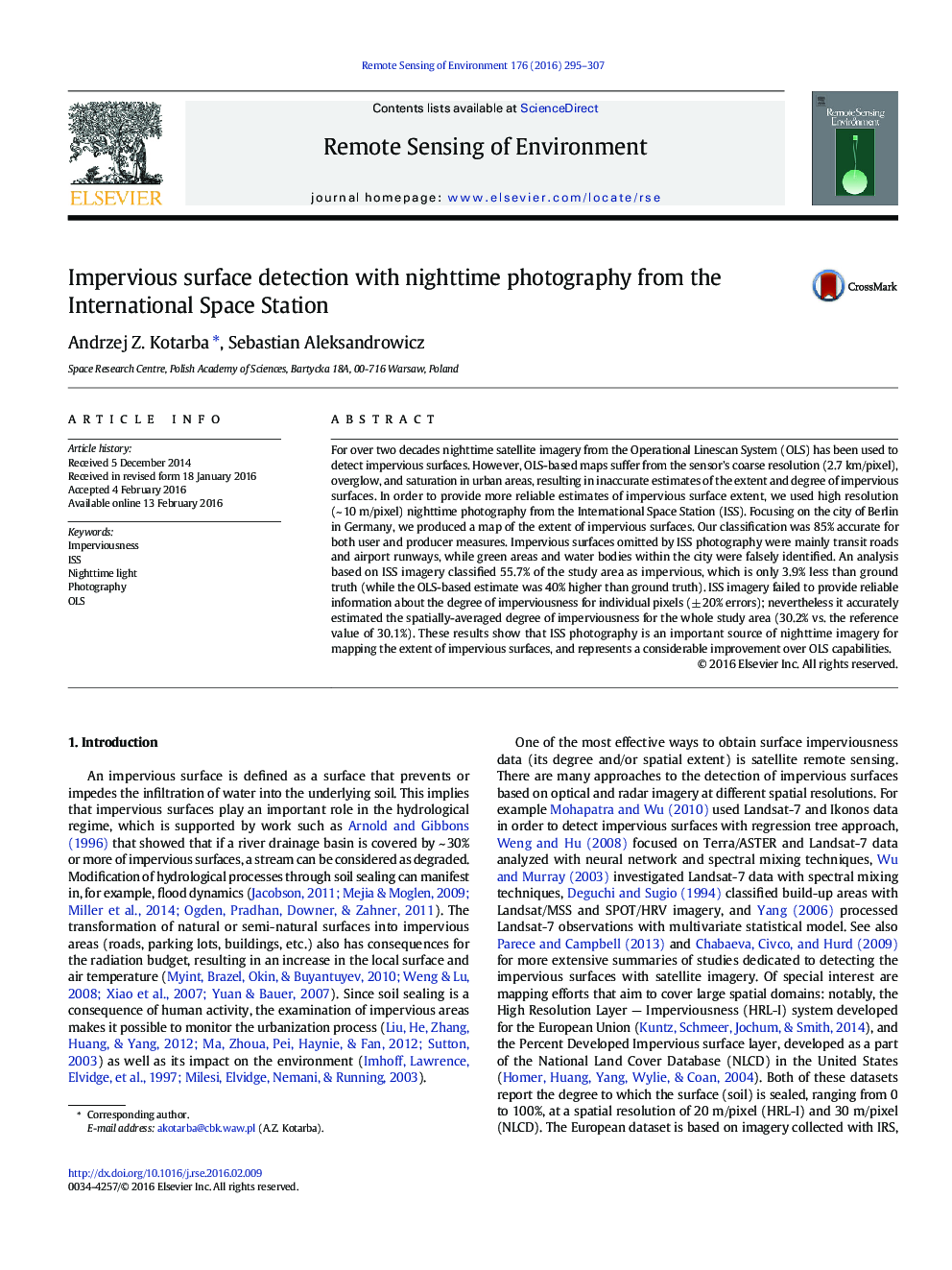| کد مقاله | کد نشریه | سال انتشار | مقاله انگلیسی | نسخه تمام متن |
|---|---|---|---|---|
| 6345368 | 1621224 | 2016 | 13 صفحه PDF | دانلود رایگان |
- Nighttime photography from the ISS was used to detect impervious surfaces.
- The ISS-based approach correctly estimated the extent of impervious surfaces.
- Overall accuracy of ISS-based map was 82%, while only 42% for unadjusted OLS map.
- Imperviousness degree estimated on per-pixel basis with ISS was accurate to ± 20%.
- Use of census data improved the ISS-based estimation of imperviousness degree.
For over two decades nighttime satellite imagery from the Operational Linescan System (OLS) has been used to detect impervious surfaces. However, OLS-based maps suffer from the sensor's coarse resolution (2.7 km/pixel), overglow, and saturation in urban areas, resulting in inaccurate estimates of the extent and degree of impervious surfaces. In order to provide more reliable estimates of impervious surface extent, we used high resolution (~ 10 m/pixel) nighttime photography from the International Space Station (ISS). Focusing on the city of Berlin in Germany, we produced a map of the extent of impervious surfaces. Our classification was 85% accurate for both user and producer measures. Impervious surfaces omitted by ISS photography were mainly transit roads and airport runways, while green areas and water bodies within the city were falsely identified. An analysis based on ISS imagery classified 55.7% of the study area as impervious, which is only 3.9% less than ground truth (while the OLS-based estimate was 40% higher than ground truth). ISS imagery failed to provide reliable information about the degree of imperviousness for individual pixels (± 20% errors); nevertheless it accurately estimated the spatially-averaged degree of imperviousness for the whole study area (30.2% vs. the reference value of 30.1%). These results show that ISS photography is an important source of nighttime imagery for mapping the extent of impervious surfaces, and represents a considerable improvement over OLS capabilities.
Journal: Remote Sensing of Environment - Volume 176, April 2016, Pages 295-307
